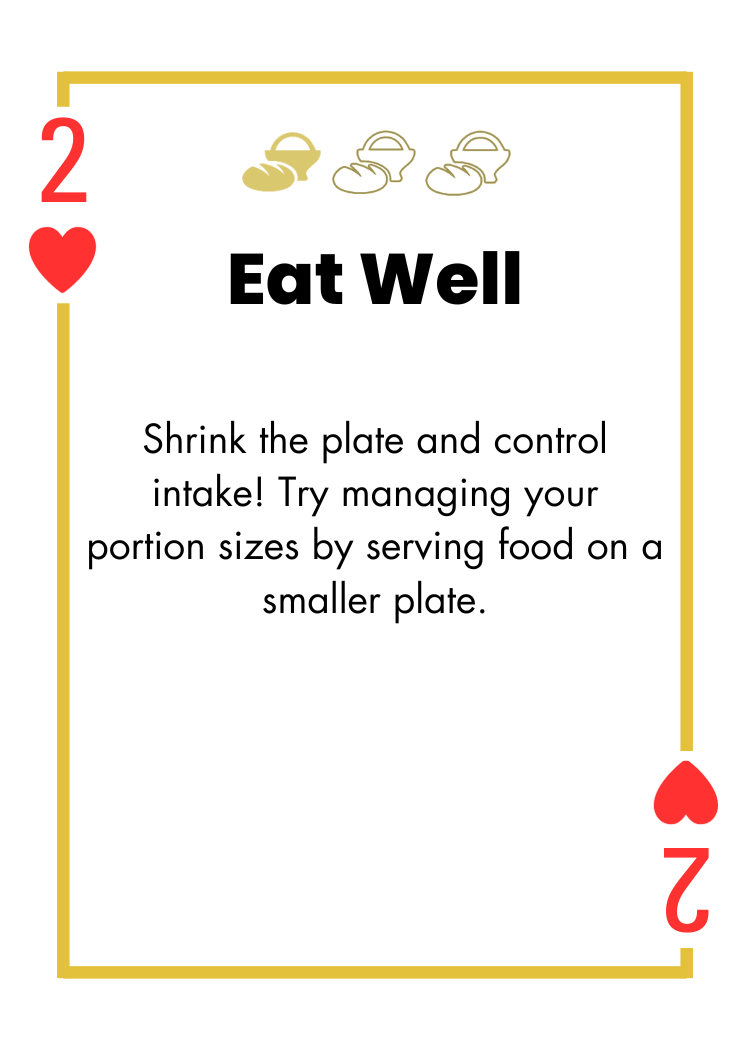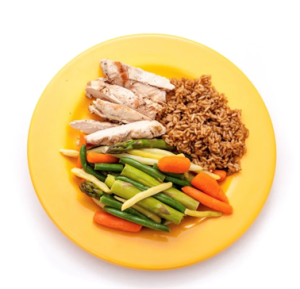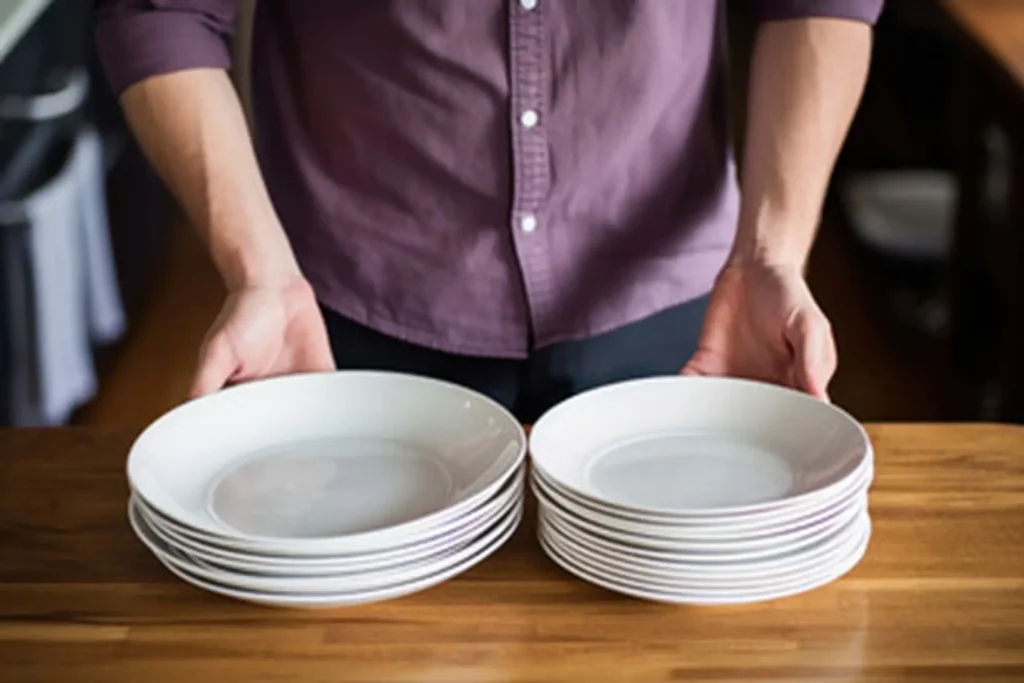2 of Hearts - Smaller Plate

Controlling your portion sizes is a great way to avoid overeating. Many studies have found that people will choose to consume more calories when they are served a larger portion, regardless of how hungry they are (Ledikwe et al., 2005). We also know that as portion sizes of commercially packaged food products and restaurant meals have increased over the past few decades, so has obesity (Benton, 2015).

Given that many of us have been taught to finish everything on our plate, the amount of food you pile onto your plate really does matter. Studies have shown that the size of plates, bowls, and serving utensils significantly influences how much food a person serves themselves and therefore how much they eat. In one study, participants served themselves 31% more ice cream when given a larger bowl and 14.5% more when given a larger serving spoon (Wansink et al., 2006). Interestingly enough, health psychology studies suggest that we are often unaware of these external factors that influence our food intake (Vartanian et al., 2008). In another study, participants chose to eat more pasta when given a larger portion size, however there was no significant difference in how full they felt compared to the participants who were given smaller portion sizes.
So, try downsizing the size of your plate. Research suggests that you may find yourself eating less, but still feeling satisfied after a meal!
According to the 2020 Eating and Activity Guidelines for New Zealand Adults, the average adult needs to consume more vegetables, legumes, and whole foods, while decreasing consumption of processed meat and sugars.
A good way to divide your plate involves filling half of your plate with non-starchy vegetables, a quarter of your plate with high-quality protein, and a quarter of your plate with whole grains and starchy vegetables.

So, simply grab a smaller plate and fill it right!
Small changes CAN make a big difference – that’s what the 1% club is all about.
Benton, D. (2015). Portion size: What we know and what we need to know. Critical Reviews in Food Science and Nutrition, 55(7), 988–1004. https://doi.org/10.1080/10408398.2012.679980
Ledikwe, J. H., Ello-Martin, J. A., & Rolls, B. J. (2005). Portion sizes and the obesity epidemic. The Journal of Nutrition, 135(4), 905–909. https://doi.org/10.1093/jn/135.4.905
Ministry of Health. 2020. Eating and Activity Guidelines for New Zealand Adults: Updated 2020. Wellington: Ministry of Health.
Rolls, B. J., Morris, E. L., & Roe, L. S. (2002). Portion size of food affects energy intake in normal-weight and overweight men and women. The American Journal of Clinical Nutrition, 76(6), 1207–1213. https://doi.org/10.1093/ajcn/76.6.1207
Vartanian, L. R., Herman, C. P., & Wansink, B. (2008). Are we aware of the external factors that influence our food intake? Health Psychology, 27(5), 533–538. https://doi.org/10.1037/0278-6133.27.5.533
Wansink, B., van Ittersum, K., & Painter, J. E. (2006). Ice cream illusions. American Journal of Preventive Medicine, 31(3), 240–243. https://doi.org/10.1016/j.amepre.2006.04.003


 See Other Cards!
See Other Cards!